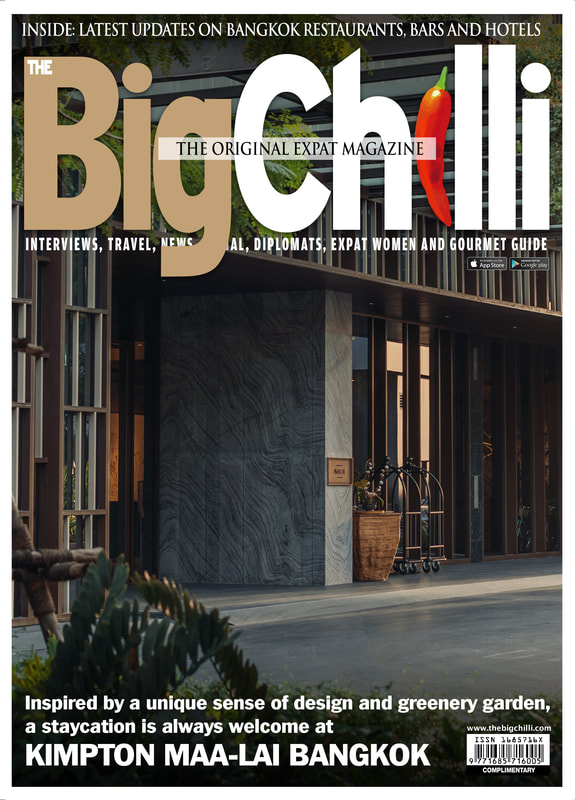Diplomat: Vice-Consul Mr Jamshid Safarov
Words MAXMILIAN WECHSLER
Words MAXMILIAN WECHSLER
| Afew words come to mind while describing the new Vice-Consul of the Republic of Uzbekistan to Thailand, Mr Jamshid Safarov: focused, determined and young. Since taking his post in May the hard-working diplomat has already shown he’s up to the task of representing his country and making favorable impression. Besides the meetings with Thai officials at various ministries, business people, travel agents and the mass-media, members of the local Muslim community, he also organised a successful reception on the occasion of the 26th anniversary of the Independence of the Republic of Uzbekistan, which was attended by distinguished guests. In addition to the Uzbekistan National Day (September 1st), Uzbek Cuisine Day and several seminars were held in Bangkok so far by the Consulate-General of the Republic of Uzbekistan. Mr Safarov took time from his busy schedule to talk to The Big Chilli at the Uzbekistan’s Consulate-General building on Wireless Road. He began by explaining his job title as Consulates are primarily used to assist people from their home countries with what are called consular issues. Background Mr Safarov was born in 1985. He is married and has three children. Besides his native Uzbek he can speak Russian, English, Turkish, Persian and a little German. “I come from a family of teachers. My father is a professor of physics and my mother also used to teach and now she is retired. I graduated from the Taskhent State Institute of Law in 2005, then studied and improved my English in the United Kingdom. I served at the system of the Ministry of Justice from 2006-2009. After that I practiced law and enrolled at the University of World Economy and Diplomacy in Tashkent, the capital of Uzbekistan. After I received my Master’s degree there in 2012, I joined the Ministry of Foreign Affairs as a holder of President named state Stipend on ‘Law and International relations’ at Masters Level, ” Mr Safarov said. Assignment in Thailand “I began my term on May 31, which was my first visit to Thailand and first assignment abroad. But I have had experience in consular issues in Central Asian countries for short periods of time. I have also taken part in several seminars and courses. For example, I attended the Advanced Programme for European Union Law and Economy in Riga Graduate School of Law, and participated in diplomatic courses in Pakistan and China.” When asked to give his first impression of Thailand upon arrival, Mr Safarov said: “To be honest, I immediately came to the realization that there is huge potential for cooperation between Republic of Uzbekistan and Kingdom of Thailand. There are many possibilities for mutually beneficial cooperation. “My philosophy is that if you are posted to a country you should love and be a part of the country so that you can understand it. You need to look at the good and the bad, and look at how things work, so you can understand how to approach the job and promote your country and look for opportunities for cooperation.” Smooth diplomacy Mr Safarov said that the diplomatic relationship between Thailand and Uzbekistan is developing in a productive way. “There are practically no disputes between the two countries. This creates a good basis for further consolidation of our joint efforts on a wide range of issues, including tourism, economy, culture and sport,” Mr Safarov pointed out. |
“The legal framework of the bilateral cooperation between Uzbekistan and Thailand consists of about 10 intergovernmental agreements on cooperation in various areas, which provides a solid platform for cooperation. Both parties are collaborating on further deepening the treaty and legal basis of mutually beneficial bilateral cooperation.
“Uzbekistan’s foreign office in Bangkok was established on April 7, 1994 and designated as a consulate, in accordance with a resolution of the Cabinet of Ministers of the Republic of Uzbekistan. Due to another resolution from November 1996 the consulate was transformed to the present Consulate-General.
“Currently diplomatic relations between Thailand and Uzbekistan are conducted through the Honorary Consulate of Thailand in Tashkent as well as the Consulate-General here.
“On May 27 of this year a seminar to honour the 25th anniversary of the establishment of diplomatic relations between Uzbekistan and Thailand was held in Tashkent with the participation of the Thai delegation.”
“Uzbekistan’s foreign office in Bangkok was established on April 7, 1994 and designated as a consulate, in accordance with a resolution of the Cabinet of Ministers of the Republic of Uzbekistan. Due to another resolution from November 1996 the consulate was transformed to the present Consulate-General.
“Currently diplomatic relations between Thailand and Uzbekistan are conducted through the Honorary Consulate of Thailand in Tashkent as well as the Consulate-General here.
“On May 27 of this year a seminar to honour the 25th anniversary of the establishment of diplomatic relations between Uzbekistan and Thailand was held in Tashkent with the participation of the Thai delegation.”
| Trade and tourism “Uzbekistan imports from Thailand various chemical products, oil, paper, aluminum and plastic products and machinery. Uzbekistan exports books, seeds and fruits, as well as textiles, cotton fiber, and yarn to Thailand,” Mr Safarov said. “Uzbekistan Airways flies from Tashkent to Bangkok three times a week. The planes are usually fully loaded as a result of the strong attractions of the touristic destinations of Uzbekistan. The number of tourists to our country is increasing overall and this includes tourists from Thailand. In 2016 there were around 900 Thais visiting Uzbekistan. “Thailand is among those 13 countries that have been granted a simplified visa procedure to visit Uzbekistan, along with the United Kingdom, Austria, Malaysia, and others. They just provide the application form, copy of passport and the payment for the consular fee. If it’s an urgent visa, it can be issued within two days, but normally it takes a little longer.” |
Uzbekistan at glance
Mr Safaron also prepared written information and photographs about his country to give readers a better knowledge about his country.
Geography and population
Uzbekistan is situated between the Amudarya and Syrdarya rivers and occupies 448,9 thousand square kilometres. The span of the territory from west to east is 1,425 km and 930 km from north to south. The country borders on Kazakhstan in the north, Kyrgyzstan and Tajikistan in the east and southeast, Turkmenistan in the west and Afghanistan in the south.
Uzbekistan possesses some of the most favourable natural and geographic conditions in Central Asia. The territory of Uzbekistan is about four fifths plains and the rest mountainous. One of the main plains is the Turan plain. In the east and northeast are the mountain spurs of Tyan-Shan and Pamir. The highest point in the country is 4,643 metres above sea level. The Kyzylkoum desert in the north and the central part of the country is one of the largest deserts in the world.
The country’s mineral wealth includes stocks of oil, natural gas, lignite and coal, gold, copper, tungsten and bismuth.
The climate of Uzbekistan is characterized by large differences in day and night, summer and winter temperatures.
The population of the Republic of Uzbekistan is about 32 million Uzbekistan has the third largest population in the CIS.
Uzbekistan is a multi-ethnic society with more than 100 ethnic groups. The native inhabitants are Uzbeks, who make up about 80% of the population.
Culture
Uzbekistan is home to one of the brightest and most original cultures of the East. Uzbek national music is characterized by a variety of subjects and genres. The distinctive Uzbek national dress for both men and women has remained constant for centuries. The cuisine is among the most versatile in of all the Orient. There are about 1,000 different dishes, drinks and desserts and many recipes are centuries old. Traditional Uzbek dance is very expressive and presents all the beauty of the nation. The main difference between Uzbek dances and those from other Eastern nations is the accent on complicated and expressive hand gestures and animated facial expressions.
Culture, handicrafts and tourism are rapidly becoming inseparable partners in Uzbekistan. Local crafts provide a vibrant introduction to cultures, traditions and ways of living. Handcrafted products make an important contribution to the local economy. Uzbek jewellery craftsmen still have been practicing ancient techniques for cutting gemstones, grain filigree, granular work, engraving and enameling, while taking into account current fashion demands and styles.
Embroidery is another popular application of handicraft in Uzbekistan. Every city’s trademark designs have their own unique features of ornamentation, composition, colour range and stitching. The ancient art of carpet weaving is also very much alive in Uzbekistan, as is wood carving, which is used and adapted in modern interior design.
Tourism in Uzbekistan
Uzbekistan boasts a rich tapestry of architectural wonders, diverse natural reserves and booming modern cities. In centuries past Uzbekistan sat at the intersection of the great trade routes along which the paths of merchants and discoverers, geographers and missionaries, invaders and conquerors passed. In modern times, a trip to Uzbekistan is high on the agenda for adventurous souls interested in culture, history, natural wonders and exotic destinations.
Heritage sites: Uzbekistan is rightfully proud of its classic architectural treasures. The Ichan-Kala complex in Khiva, and the historical centres of Bukhara, Shakhrisabz and Samarkand are UNESCO World Heritage sites. Many unique ancient monuments and constructions in these towns remain as genuine samples of a rich historical era.
Tashkent: Tashkent is the capital of Uzbekistan and one of the largest cities of Central Asia. An important international transport junction in both the ancient past and the present, it is directly linked to many countries of the world.
Samarkand: Over the centuries, many locations in modern-day Uzbekistan played a major role in the story of the ancient, transcontinental thoroughfare known as the Great Silk Road. But one city stands out as being “the Heart of Great Silk Road”. That city is Samarkand. “Radiant Point of Globe”, “Jewel of Islamic Architecture”, and “Mirror of the World” are some of the glowing epithets bestowed upon Samarkand from earliest times. A contemporary of Rome, Athens, and Babylon, the city is more than 2,750 years old.
Noble Bukhara: Bukhara, the famous trading post on the Silk Road, stirs romance in many travelers. With over 2,500 years of history and a welcoming atmosphere, Bukhara is a favourite tourist destination. More than 140 ancient monuments are located within a compact area that is best explored on foot.
Khiva: Khiva, “the museum in the open”, is the only town along the Great Silk Road that has remained intact through the centuries and retained the exotic flavour of a medieval town. Today Ichan Kala, the nucleus of ancient Khiva, offers visitors a stunning homogeneous collection of architecture from the late 18th century and first half of the 19th century.
Termez: The multi-faceted history of Uzbekistan is undoubtedly a reflection of its geographical location, and this is particularly true in the case of Termez, the southernmost city of the country. Termez was founded on the right bank of the Amu Darya River at the crossroads of Silk Road caravan routes, and for more than 2,500 years it has retained its capacity as a major river port.
Mr Safaron also prepared written information and photographs about his country to give readers a better knowledge about his country.
Geography and population
Uzbekistan is situated between the Amudarya and Syrdarya rivers and occupies 448,9 thousand square kilometres. The span of the territory from west to east is 1,425 km and 930 km from north to south. The country borders on Kazakhstan in the north, Kyrgyzstan and Tajikistan in the east and southeast, Turkmenistan in the west and Afghanistan in the south.
Uzbekistan possesses some of the most favourable natural and geographic conditions in Central Asia. The territory of Uzbekistan is about four fifths plains and the rest mountainous. One of the main plains is the Turan plain. In the east and northeast are the mountain spurs of Tyan-Shan and Pamir. The highest point in the country is 4,643 metres above sea level. The Kyzylkoum desert in the north and the central part of the country is one of the largest deserts in the world.
The country’s mineral wealth includes stocks of oil, natural gas, lignite and coal, gold, copper, tungsten and bismuth.
The climate of Uzbekistan is characterized by large differences in day and night, summer and winter temperatures.
The population of the Republic of Uzbekistan is about 32 million Uzbekistan has the third largest population in the CIS.
Uzbekistan is a multi-ethnic society with more than 100 ethnic groups. The native inhabitants are Uzbeks, who make up about 80% of the population.
Culture
Uzbekistan is home to one of the brightest and most original cultures of the East. Uzbek national music is characterized by a variety of subjects and genres. The distinctive Uzbek national dress for both men and women has remained constant for centuries. The cuisine is among the most versatile in of all the Orient. There are about 1,000 different dishes, drinks and desserts and many recipes are centuries old. Traditional Uzbek dance is very expressive and presents all the beauty of the nation. The main difference between Uzbek dances and those from other Eastern nations is the accent on complicated and expressive hand gestures and animated facial expressions.
Culture, handicrafts and tourism are rapidly becoming inseparable partners in Uzbekistan. Local crafts provide a vibrant introduction to cultures, traditions and ways of living. Handcrafted products make an important contribution to the local economy. Uzbek jewellery craftsmen still have been practicing ancient techniques for cutting gemstones, grain filigree, granular work, engraving and enameling, while taking into account current fashion demands and styles.
Embroidery is another popular application of handicraft in Uzbekistan. Every city’s trademark designs have their own unique features of ornamentation, composition, colour range and stitching. The ancient art of carpet weaving is also very much alive in Uzbekistan, as is wood carving, which is used and adapted in modern interior design.
Tourism in Uzbekistan
Uzbekistan boasts a rich tapestry of architectural wonders, diverse natural reserves and booming modern cities. In centuries past Uzbekistan sat at the intersection of the great trade routes along which the paths of merchants and discoverers, geographers and missionaries, invaders and conquerors passed. In modern times, a trip to Uzbekistan is high on the agenda for adventurous souls interested in culture, history, natural wonders and exotic destinations.
Heritage sites: Uzbekistan is rightfully proud of its classic architectural treasures. The Ichan-Kala complex in Khiva, and the historical centres of Bukhara, Shakhrisabz and Samarkand are UNESCO World Heritage sites. Many unique ancient monuments and constructions in these towns remain as genuine samples of a rich historical era.
Tashkent: Tashkent is the capital of Uzbekistan and one of the largest cities of Central Asia. An important international transport junction in both the ancient past and the present, it is directly linked to many countries of the world.
Samarkand: Over the centuries, many locations in modern-day Uzbekistan played a major role in the story of the ancient, transcontinental thoroughfare known as the Great Silk Road. But one city stands out as being “the Heart of Great Silk Road”. That city is Samarkand. “Radiant Point of Globe”, “Jewel of Islamic Architecture”, and “Mirror of the World” are some of the glowing epithets bestowed upon Samarkand from earliest times. A contemporary of Rome, Athens, and Babylon, the city is more than 2,750 years old.
Noble Bukhara: Bukhara, the famous trading post on the Silk Road, stirs romance in many travelers. With over 2,500 years of history and a welcoming atmosphere, Bukhara is a favourite tourist destination. More than 140 ancient monuments are located within a compact area that is best explored on foot.
Khiva: Khiva, “the museum in the open”, is the only town along the Great Silk Road that has remained intact through the centuries and retained the exotic flavour of a medieval town. Today Ichan Kala, the nucleus of ancient Khiva, offers visitors a stunning homogeneous collection of architecture from the late 18th century and first half of the 19th century.
Termez: The multi-faceted history of Uzbekistan is undoubtedly a reflection of its geographical location, and this is particularly true in the case of Termez, the southernmost city of the country. Termez was founded on the right bank of the Amu Darya River at the crossroads of Silk Road caravan routes, and for more than 2,500 years it has retained its capacity as a major river port.
| Uzbekistan on the right track “We have only been independent for 26 years. But we are on the right track. We have good relations with all countries. Of course, there are sometimes issues with other countries but we are trying to solve them in a proper and peaceful way. Most importantly, Uzbekistan is paying great attention to improve the lives of its people. Uzbekistan is a modern country with clean and properly operating facilities. Communications are very good and so is transportation. Mercedes-Benz, Man, and Isuzu buses are running for public transportation. The subway in Tashkent is among the cleanest in the world. We are the first country in Central Asia to introduce the high-speed trains. “So far we have bought a couple of super-modern Boeing 787-8 ‘Dreamliner’ planes that are already in service. We have nice hotels with the same high standards in developed countries. |
| “In Uzbekistan education is totally free of charge until you graduate from high school. The government bears the cost of all facilities. Roughly 40% of the total annual admission of each university is provided under the government payment. Medical treatment is free in public hospitals in Uzbekistan. In an emergency, you just pick up the phone and they will come as fast as possible. You call the number and tell the operator your name and where you live and they will check the system and come to your home and treat you. If it is necessary they will transport you to the hospital. This is all free. The medical system is nowadays one of the main reasons of the development of medical tourism in Uzbekistan,” Mr Safarov said. “So far Uzbekistan has made a name for itself as a reliable partner in the world community. The latest edition of the World Bank’s Global Economic Prospects ranks Uzbekistan as the world’s second-fastest-growing economy, with a projected growth of 7.6% this year. “Uzbekistan is also one of the safest countries in the world, as indicated in the 2017 Gallup Global Law and Order Report, which lists us as the second safest place to be. As a result of the consolidated hard work we haven’t had any kind of terrorist acts last decade and the level of violence of any type is very low in our country.” Further development Astrategy of action on five priority development directions for Uzbekistan from 2017-2021 was confirmed in a decree of the President of Uzbekistan, H.E. Shavkat Mirziyoev, dated February 7, 2017,” said Mr. Safarov. “The five priority directions are: (1) improving the system of state and public construction; (2) ensuring the rule of law and further reform of the judicial and legal system; (3) development and liberalization of the economy; (4) development of the social sphere and (5) ensuring security, inter-ethnic accord and religious tolerance, as well as implementing a balanced, mutually beneficial and constructive foreign policy.” |
| Sports “Uzbekistan pays great attention to the development and promotion of sports and physical culture. In years of independence, the country has established an effective system of training professional athletes, coaches and referees and promoted physical education and a healthy lifestyle among the young,” Mr Safarov stressed. “As an example of our success in this area is the 2016 Rio Olympic Games. Uzbekistan was shown to have the best boxing team in the world, winning three gold, two silvers and three bronze medals in boxing. “Besides these, Ruslan Nurudinov set an Olympic record and won weightlifting gold for Uzbekistan. It was the first medal of any kind in weightlifting for the Central Asian nation. Overall Uzbekistan was ranked 21st at the Olympics, the best in Central Asia. “In the Rio 2016 Paralympic Games Uzbekistan’s team ranked 16th with eight gold, six silver and 17 bronze.” |
|
Motherland of scholars
Uzbekistan is the birthplace of a long list of great scholars. Mr Safarov gave a brief biography for some of them: Abu Abdullah Muhammad ibn Ismail al-Bukhari was the great theologian of the East. He collected and recorded about 600,000 hadith, legends based on the life or sayings of the Prophet. Out of these, al-Bukhari selected as “flawless” about 7,400 hadith to include into the “As-Sahih”, which has become the second most important book after the Koran for Sunni Muslims. The Imam was born in Bukhara in 810 AD and ended his days in Samarkand. He was buried in a small village Hartang, 30 km from Samarkand. His mausoleum is one of the most revered pilgrimage sites in Islam. Abu ‘Ali al-Husayn ibn Sina, known in world as “Avicenna”, is probably the most influential philosopher of the pre-modern Islamic tradition. Born in Afshana (Bukhara) about 980 AD, he is best known as a polymath and a physician. His most famous works are The Book of Healing, a philosophical and scientific encyclopedia, and The Canon of Medicine, a medical encyclopedia that until the early modern period was still used as a medical textbook in Europe and the Islamic world. |
Mirzo Muhammad ibn Shahruh ibn Timur Ulugbek Kuragan was regent of Samarkand (1411-1449). He has entered history as a courageous scholar, an outstanding mathematician and generous teacher. Between 1417 and 1420, he built a madrasa in Registan Square in Samarkand. His most famous pupil in astronomy was Ali Qushchi. He was also famous in the fields of medicine and poetry.
Abu Rayhan Muhammad ibn Ahmad Al-Biruni, known as Al-Biruni, was a scholar and polymath. Ninety-five of 146 books known to have been written by Al-Biruni were devoted to astronomy, mathematics, and related subjects like mathematical geography. Al-Biruni’s works explained the different phases of the moon. Methods proposed and used by Al-Biruni were used, among other applications, to estimate the radius and circumference of the Earth.
Abu Rayhan Muhammad ibn Ahmad Al-Biruni, known as Al-Biruni, was a scholar and polymath. Ninety-five of 146 books known to have been written by Al-Biruni were devoted to astronomy, mathematics, and related subjects like mathematical geography. Al-Biruni’s works explained the different phases of the moon. Methods proposed and used by Al-Biruni were used, among other applications, to estimate the radius and circumference of the Earth.

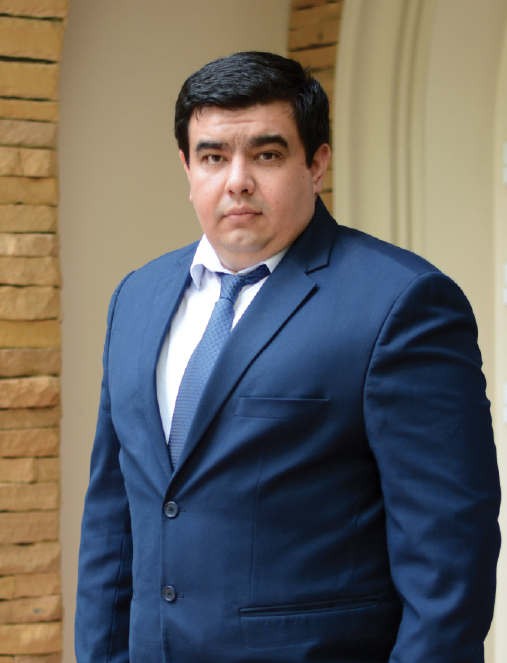
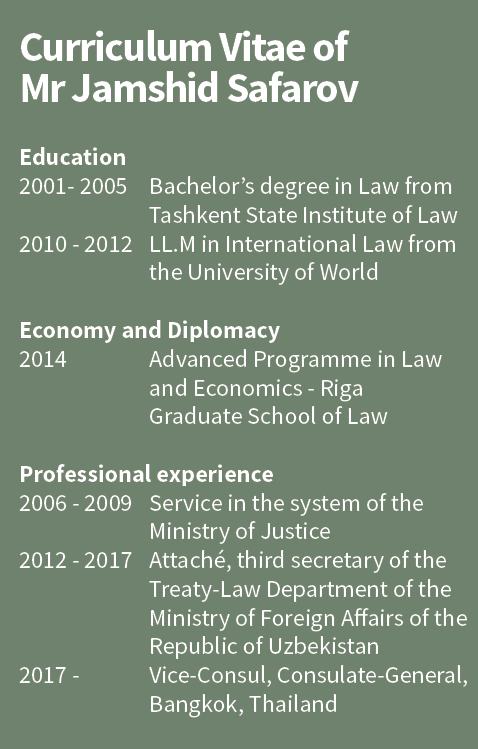
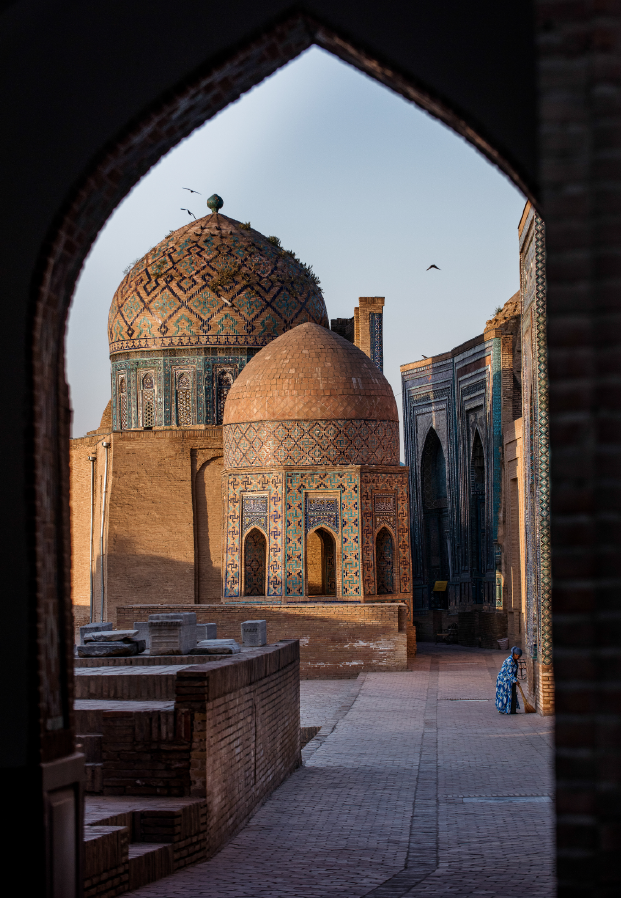
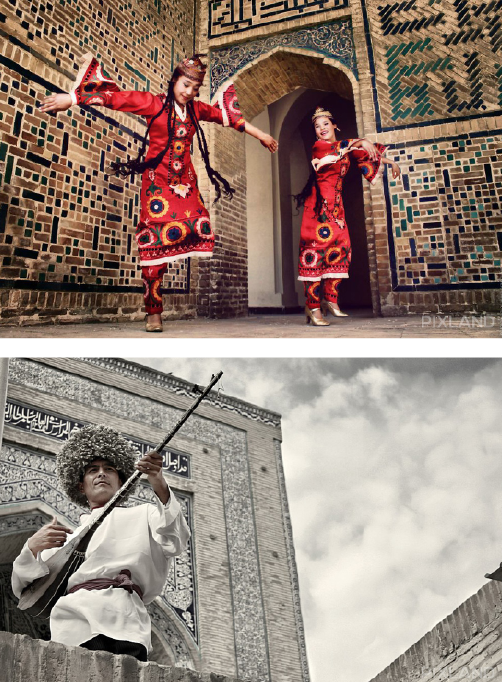
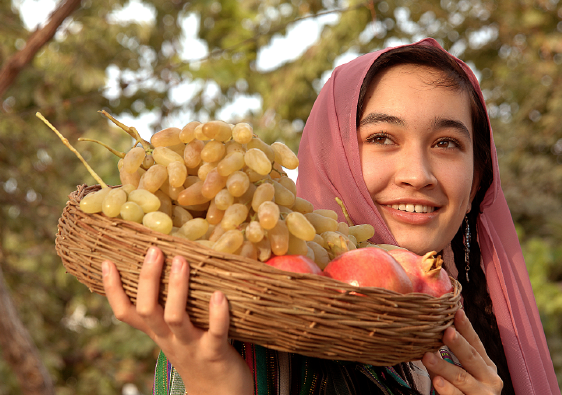
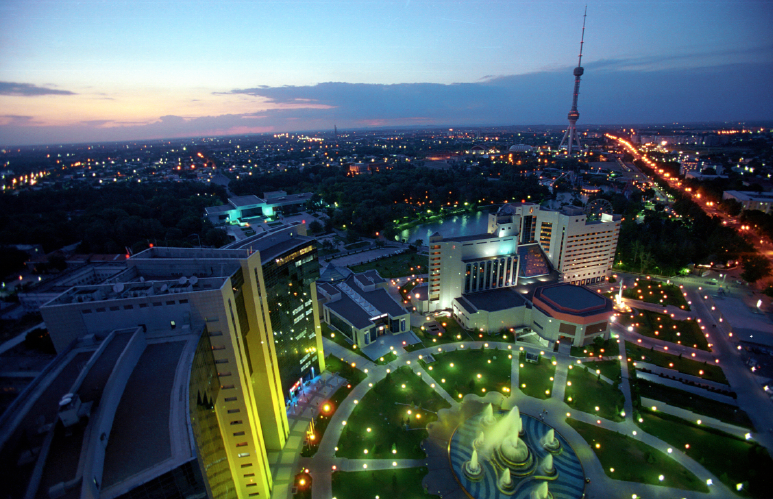
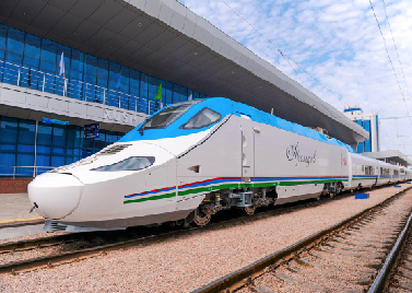
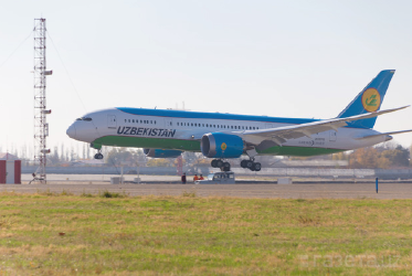
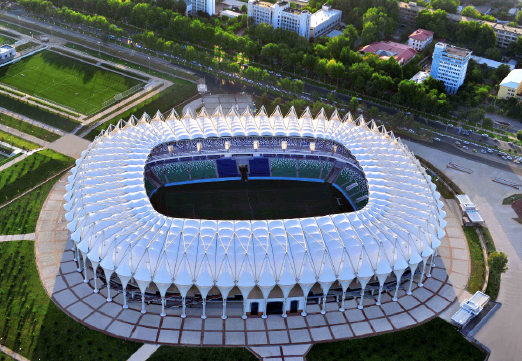
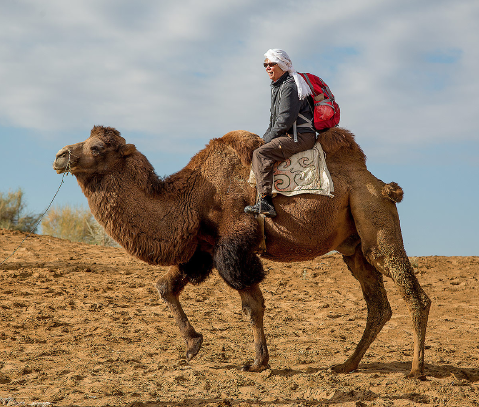
 RSS Feed
RSS Feed





